Taganka raspberry variety
This is one of the varieties bred from seed by exchange with British breeders. One of the founders of the already legendary series of large-fruited raspberries, which we are so proud of. And again, a somewhat incomprehensible mystery for gardeners. Despite the fact that the variety is already more than forty years old, the debate about whether it is a remontant or a summer one still does not subside. One of the reasons is the wording that is not entirely clear to people, or simply a typo in the book of the originator, Professor V.V. Kichiny. And the rest was completed by would-be rewriters on the Internet and re-sorted merchants.
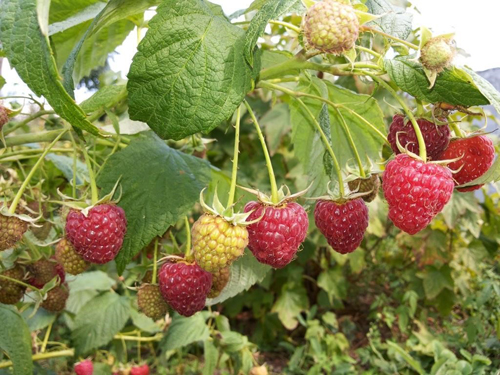
Personally, I especially liked the comparison of Taganka, bred by Professor Kincheva, with Ji Wang Ji's raspberries. Considering that the professor is a man and his surname is Kichin, and not Kinchev, well, and raspberries are called Joan Jay... But what our Taganka really is, what is attractive to gardeners after so many years - more about this in our article below.
History of creation
This summer variety was bred at the Moscow Institute of Horticulture and Nursery (VSTISP). Raspberry seeds were sent to the Russian professor V.V. Kichin as part of the planting material exchange program. They were obtained by the world renowned breeder, Dr. Derek Jennings, from cross-pollination of the 707/75 x Krupna Dwarf family. Crossbreeding was carried out at the Scottish Horticultural Institute. In the experimental plots of VSTISP in Moscow, the seeds were sown in 1976. And already in 1978, seedlings under the number K150 were selected, corresponding to the required characteristics. Then, having made sure of the stability of the obtained varietal qualities in new generations, the raspberries began to be propagated and prepared for open sale. Since 1980, it has been officially launched as a new variety under the name Taganka. By the way, he has a very close relative, the summer variety of the late ripening Mirage. It was selected from the same sowing of foreign seeds (707/75 x Krupna Dvuroda), in the same 1978, under the number K151.
Description
A type of mid-late ripening with fruits of universal use. Begins to sing from 10-15 July. The fruiting period is slightly extended and takes about a month on average. The main part of the crop is harvested in 4-5 mass samples. Recommended for growing in all areas of Russian horticulture.
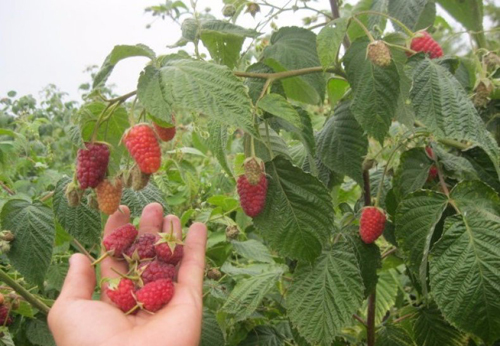
Shoots of Taganka sometimes have partial, but clearly pronounced remontance. The upper part of the stem bears fruit. The berries can be harvested until mid-October, depending on the growing region. After fruiting, it is recommended to cut off the spent part of the raspberry shoot so that the remaining part bears fruit effectively in the summer. Repairability is especially evident in hot years with long, warm autumn. And therefore, quite often the variety is positioned as exclusively remontant. But this statement is not true. Plus, even on the site of the VSTISP (originator) it is indicated that it is of normal (summer) fruiting, medium late ripening.
The plant has a powerful growth force, the shoots are tall, strong, resilient, rather spreading. For the most part, they have a height of 1.8-2.0 meters, less often they grow up to 2.5 meters. Shoots are thick and very thick, with elongated (up to 10 cm) internodes, runny. Covered with small, soft, dark purple thorns, which, after the stems mature, acquire a dark brown color. Taganka produces quite a lot of replacement shoots, usually 8-10 of them grow in a bush per season. Raspberry root shoots give quite a lot. Tall shoots under the weight of a very large number of fruits can bend to the ground or simply fall apart to the sides. Therefore, the variety requires a mandatory tie to the trellis or the installation of supports. It is also necessary to normalize the number of shoots, 4-5 pieces should be left in the bush, or 8-10 per linear meter. Young shoots are light green, by the end of summer they partially acquire an anthocyanin hue. In the second year, the stems ripen and become woody, become light brown in color.Laterals (fruit twigs) are long, numerous. They are strong, elastic, thickened, have 2-4 orders of branching. On each such branch, 20 or more fruits ripen very heap.
Leaves are large, deep dark green in color, whitish underneath. They are oval in shape, partially twisted, with a corrugated surface and bearded edges. Taganka blooms profusely, amicably, flowers are collected in large dense brushes. The flowers themselves are large, white, up to 2 cm in diameter.
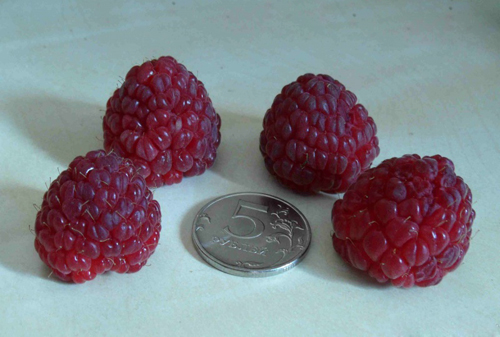
Raspberry berries are large and very large, beautiful, mostly aligned, fleshy, wide, conical in shape. They are deep dark red in color with glossy shine and slight pubescence. Drupes are uniform, medium in size, tightly interconnected. The fruits are quite dense, but the pulp itself is juicy and contains a small amount of small seeds. The berries of this variety have a very good, really raspberry flavor and a persistent aftertaste. The fruits are sweet, with a pleasant thick raspberry aroma. They have a well-balanced sugar and acid level.
The average weight of Taganka berries in the season is 4-8 grams, but often they can reach 10-12 grams (subject to proper agricultural technology and under favorable growing conditions). The description of the originators indicates that sometimes the fruits can reach a weight of 20-23 grams. But this is rather a rare exception to the rule. We are sure that few gardeners and nursery growers have seen berries of this size and weight. Most likely these will be deformed, heavily overgrown, double fruits. The yield of raspberries is consistently high, 4-5 kg per bush. With proper agricultural technology, productivity can almost double. The yield per hectare is up to 18-20 tons.
Fruits for universal use. Suitable for both personal consumption and for selling fresh berries in markets, preferably located at a short distance from the collection point. The fruits are used for all types of processing (preserves, jams, marshmallows). For these purposes, the berries are excellent due to their good sweet taste and small, few seeds. They are also used for drying and freezing. Keeping quality and transportability of Taganka berries is at an average level (usually without refrigeration for up to 1 day).
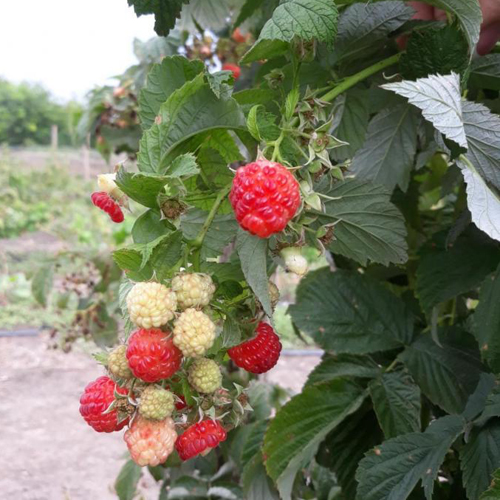
Plants are relatively resistant to major fungal diseases and raspberry pests. Winter hardiness is moderate, up to −25 ... −30 ° С; in regions with severe winters, shelter is required for the winter. And it is advisable to use bending and tying shoots to each other in general in all growing regions.
A huge plus of the variety is its high unpretentiousness and good adaptation to various conditions. It is suitable for "lazy summer residents". And also for those who, due to certain circumstances, are rarely forced to visit their dacha or garden plot. This raspberry normally tolerates interruptions in watering and irregular feeding. In this case, you will not be left without berries, but Taganka will not be able to realize even half of its great potential. And so, she is really a real hard worker! The variety is distinguished by regular, consistently high productivity.
Our heroine responds very positively to the improvement of cultivation conditions. If you are faced with the task of obtaining the maximum possible yield and achieving high quality berries, then you cannot let the cultivation of this raspberry go by itself. Only when the necessary conditions are created, timely fertilizing with mineral fertilizers, the introduction of organic matter (in particular rotted manure) into the soil, and also with regular provision with a sufficient amount of moisture, Taganka will show excellent results. Including all this is necessary for good marketability of berries. In addition to all of the above, it is advisable to plant the variety in a place well-lit by the sun.For good indicators of transportability and keeping quality, fertilizing with potash fertilizers is important, especially at the time of berry filling.
Strengths
- The versatility of the use of fruits.
- Soft, small and non-aggressive spines that do not interfere with berry picking.
- Amicable ripening of fruits, which allows you to spend less time and effort on sampling.
- Resistance to various soil and climatic conditions, drought and heat resistance.
- Relative resistance to major diseases and pests of raspberries.
- Often, on the shoots of the current year, a significant manifestation of remontance is possible, which allows the berry season to continue until frost.
- Delicious, sweet and aromatic berries.
- Stable, regularly high yield indicators of the variety.
Weak sides
- With insufficient attention to the plant, the indicators of transportability fall.
- Tall, strongly bushy, sprawling shoots, requiring obligatory garter and regular cutting of excess.
- Sometimes Taganka berries are not strong enough for transportation over long distances.
- Thorny shoots.
- Low (moderate) frost resistance of raspberries.
Author: Maxim Zarechny.

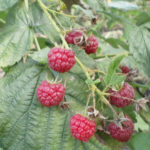
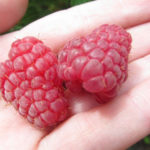

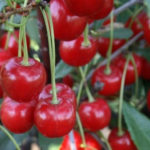
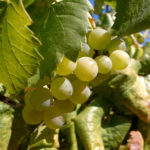



Taganka has been growing in my garden for about three years. I planted her on the advice of a friend. Actually, she gave me some cuttings with roots for breeding. I planted it in the fall, having previously cut the cutting to a length of about 30 cm, watered it, fertilized it a little and covered it so that the roots would not freeze. The raspberry endured the winter well and in the spring gave young shoots from the root. The first berries ripened around the beginning of June. Raspberries have quite a lot of berries, they grow in clusters and bear fruit for a long time - until autumn. The taste is very good, juicy and sweet, rather large in size.
I read the reviews and think, who wrote them? In Kursk, summer raspberries yielded on young shoots, and even at the beginning of JUNE !!! I live in the Krasnodar Territory and we have this raspberry yields on the RUNS OF THE SECOND YEAR !!! Why deceive the people?